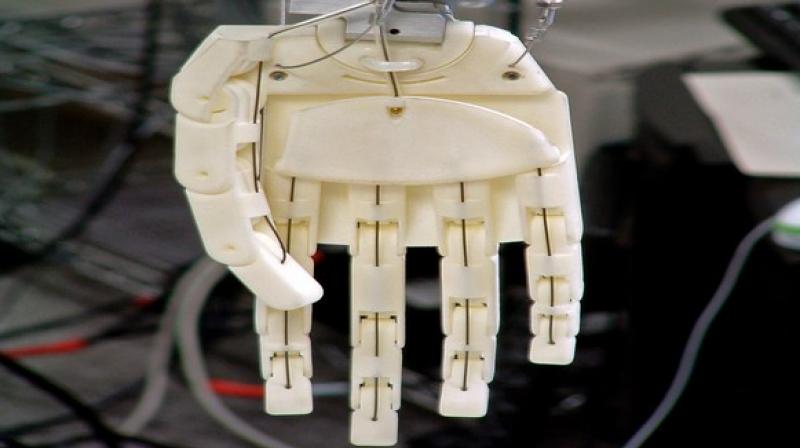Scientists develop artificial muscles that bloom, dance, and wave

Researchers have developed an ultrathin, artificial muscle for soft robotics called an actuator.
The advancement recently reported in the journal 'Science Robotics' was demonstrated with a robotic blooming flower brooch, dancing robotic butterflies and fluttering tree leaves on a kinetic art piece.
It contracts or rotates like muscle fibres using a stimulus such as electricity. Engineers around the world are striving to develop more dynamic actuators that respond quickly, can bend without breaking, and are very durable.
Soft, robotic muscles could have a wide variety of applications, from wearable electronics to advanced prosthetics.
The team from KAIST's Creative Research Initiative Center for Functionally Antagonistic Nano-Engineering developed robotic muscle that looks like a skinny strip of paper about an inch long.
They used a particular type of material called MXene, which is a class of compounds that have layers only a few atoms thick.
Their chosen MXene material (T3C2Tx) is made of thin layers of titanium and carbon compounds. It was not flexible by itself; sheets of material would flake off the actuator when bent in a loop.
That changed when the MXene was "ionically cross-linked" -- connected through an ionic bond -- to a synthetic polymer.
The combination of materials made the actuator flexible, while still maintaining strength and conductivity, which is critical for movements driven by electricity.
Their particular combination performed better than others reported. Their actuator responded very quickly to low voltage and lasted for more than five hours moving continuously.
To prove the tiny robotic muscle works, the team incorporated the actuator into wearable art: an origami-inspired brooch mimics how a narcissus flower unfolds its petals when a small amount of electricity is applied.
They also designed robotic butterflies that move their wings up and down and made the leaves of a tree sculpture flutter.
"Wearable robotics and kinetic art demonstrate how robotic muscles can have fun and beautiful applications. It also shows the enormous potential for small, artificial muscles for a variety of uses, such as haptic feedback systems and active biomedical devices," said Il-Kwon Oh, lead paper author and professor of mechanical engineering.

